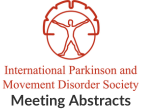Effect of repetitive transcranial magnetic stimulation with intensive physical therapy in cerebellar ataxia: A pilot study
Objective: The present study investigated the efficacy and safety of combination treatment of repetitive transcranial magnetic stimulation (rTMS) and physical therapy (PT) in patients with…Characterization of ataxia in Sjogren’s syndrome
Objective: This study aimed to characterize the pattern of ataxia in Sjogren’s syndrome and also to describe cerebellar ataxia and cerebellar atrophy in some of…Clinical features of impaired communication in patients with multiple system atrophy
Objective: This study aimed to clarify the characteristics of communication impairment, its influencing factors, and availability of communication tools in patients with multiple system atrophy…Klebsiella pneumoniae meningitis presenting with chorea
Objective: Klebsiella pneumoniae causes different type of community-acquire and nosocomial infections including pneumonia, sepsis and liver abscess. Klebsiella pneumoniae is considered as the uncommon pathogen…Balance rehabilitation with a virtual reality protocol for patients with hereditary spastic paraplegia: Protocol for a clinical trial
Objective: Determine benefits of vestibular rehabilitation involving virtual reality through the comparison of pre-intervention and post-intervention evaluations in individuals with hereditary spastic paraplegia. Background: Neurodegenerative…Real-World Use and Impact of VMAT2 Inhibitors in Patients with Tardive Dyskinesia
Objective: To describe symptom impact and treatment outcomes in patients prescribed vesicular monoamine 2 (VMAT2) inhibitors for the treatment of tardive dyskinesia (TD). Background: TD,…The effect of botulinum toxin A on pain associated with cervical dystonia (CD) in routine clinical practice
Objective: To evaluate the effect of abobotulinumtoxinA (aboBoNT-A) on pain associated with cervical dystonia (CD) in routine clinical practice. Background: Pain is considered as the…Phenotypic heterogeneity in Chinese dystonia patients with KMT2B variants
Objective: Our study is to summarize genotype-phenotype features with KMT2B-related dystonia in China. Background: KMT2B-related dystonia is a recently discovered childhood onset movement disorder. It…Fractal analysis of muscle ultrasound imaging to evaluate muscle health and spasticity
Objective: The aim was to assess the capabilities of using fractal analysis of neuromuscular ultrasound images to evaluate muscle health and spasticity. Background: Ultrasound (US)…Distinct maladaptive and compensatory wiring patterns in penetrant and non-penetrant dystonia mutation carriers
Objective: DYT1 and DYT6 are autosomal dominant mutations for primary dystonia with incomplete penetrance. We have found that expression levels for a distinct dystonia-related functional…
- « Previous Page
- 1
- …
- 55
- 56
- 57
- 58
- 59
- …
- 149
- Next Page »
